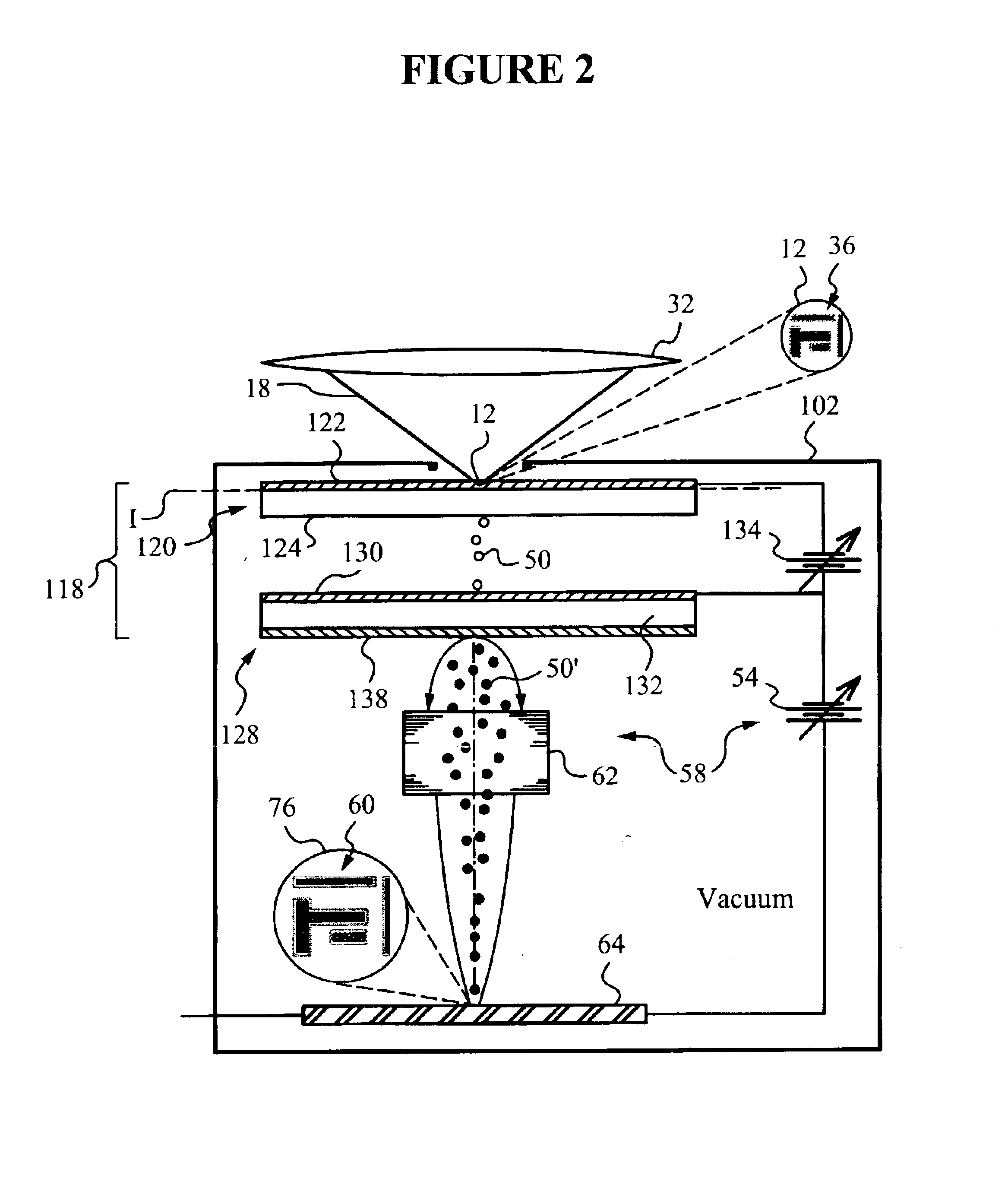System and method for aerial image sensing
a technology of aerial image and sensing method, which is applied in the field of sensing an aerial image, can solve the problems of limited resolution of the sensed image, limited imaging performance, and lithography masks in high-energy ranges of the electromagnetic spectrum, and achieve the effect of enhancing the photo-reception efficiency of the photo-sensitive area of each photo-detector under the apertur
- Summary
- Abstract
- Description
- Claims
- Application Information
AI Technical Summary
Benefits of technology
Problems solved by technology
Method used
Image
Examples
Embodiment Construction
[0036]With reference to FIG. 1, apparatus 10 senses an aerial image 12 in a photolithographic device 14. Photolithographic device 14 is equipped with a light source 16 for generating light 18 at a suitable exposure wavelength λ0. Photolithographic device 14 may be integrated into or part of a photolithographic stepper or scanner. The light source 16 may be a laser (for example, a pulsed laser), a UV exposure lamp or any other source suitable for photolithography.
[0037]The photolithographic device 14 also includes condensing optics 20, in the form of a refractive lens, to collect light 18 emitted by source 16 and focus it on an object 22. It should be noted that any type of optics may be used to collect light 18 including, for example, reflective optics rather than refractive optics.
[0038]The object 22 may be a photolithographic mask made of a substrate 24 and a mask pattern 26 deposited on the surface of substrate 24. In the present embodiment, substrate 24 is transmissive to light ...
PUM
| Property | Measurement | Unit |
|---|---|---|
| conduction band energy | aaaaa | aaaaa |
| thick | aaaaa | aaaaa |
| thick | aaaaa | aaaaa |
Abstract
Description
Claims
Application Information
 Login to View More
Login to View More - R&D
- Intellectual Property
- Life Sciences
- Materials
- Tech Scout
- Unparalleled Data Quality
- Higher Quality Content
- 60% Fewer Hallucinations
Browse by: Latest US Patents, China's latest patents, Technical Efficacy Thesaurus, Application Domain, Technology Topic, Popular Technical Reports.
© 2025 PatSnap. All rights reserved.Legal|Privacy policy|Modern Slavery Act Transparency Statement|Sitemap|About US| Contact US: help@patsnap.com



